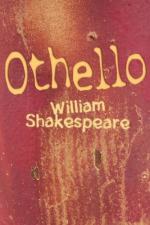|
This section contains 7,223 words (approx. 25 pages at 300 words per page) |

|
SOURCE: “Othello: The Moor and the Metaphor,” in South Atlantic Review, Vol. 55, No. 4, November, 1990, pp. 1-17.
In the essay below, Braxton contends that Othello is not a play about race, and suggests “a dramaturgical purpose for the character's blackness. …”
Although the circumstance of Othello's blackness is often assumed to embody a racial problem, as in K. W. Evans's assertion in “The Racial Factor in Othello” that “no analysis of the play can be adequate if it ignores the factor of race” (125), Shakespeare's play itself demonstrates that Othello's color outweighs in significance the element of race.1 Physical characteristics, of course, help define race, and Othello's black skin and thick lips identify him as a member of the Negroid race, as distinguished from either the Caucasoid or Mongoloid races. The difficulty of determining Othello's specific ethnic background on the basis of textual evidence suggests that those details that relate to...
|
This section contains 7,223 words (approx. 25 pages at 300 words per page) |

|


